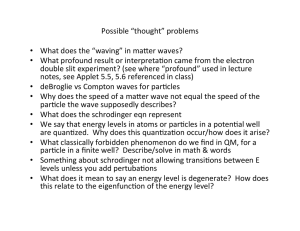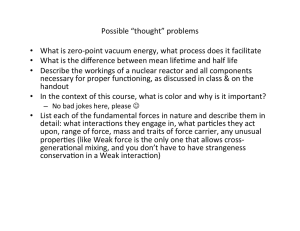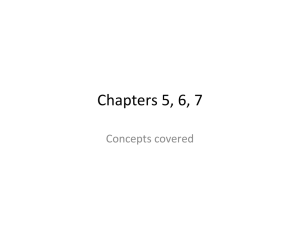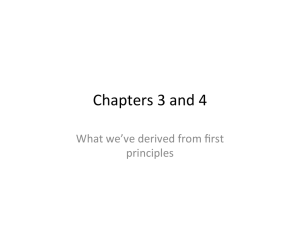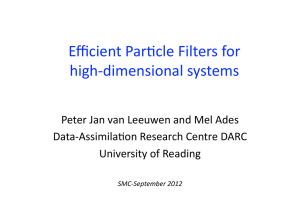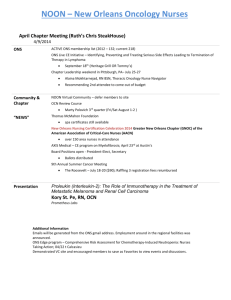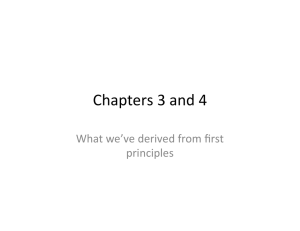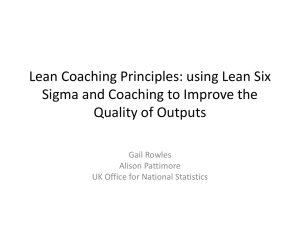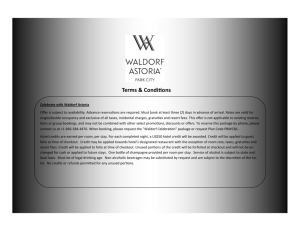Document 10512910
advertisement
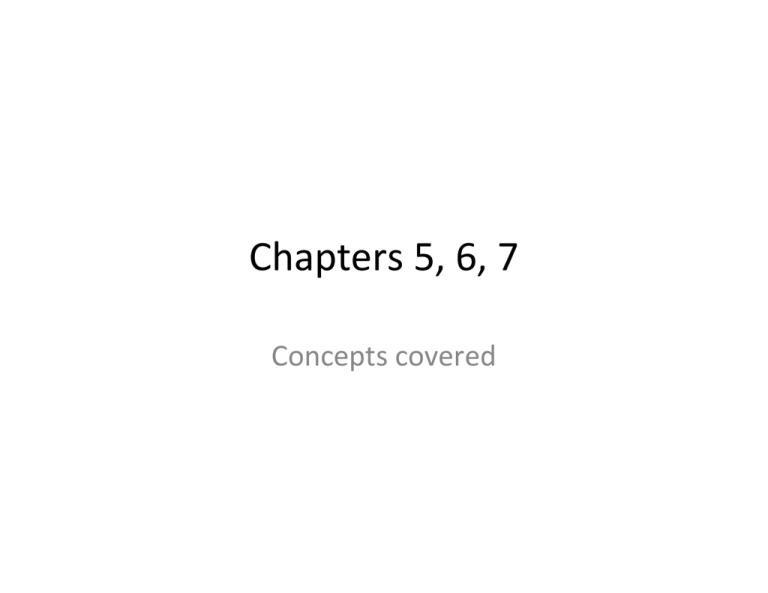
Chapters 5, 6, 7 Concepts covered • deBroglie ma8er wavelengths: rela;vis;c, and non-­‐rela;vis;c • Introduc;on to the idea of wave func;ons, probability densi;es, superposi;on of waves, wave packets and envelopes • The speed of a ma8er wave is not the same as the speed of the par;cle the wave describes • Heisenberg uncertainty principle • Classical standing waves, superposi;on of L and R traveling waves, quan;za;on arises due to boundary condi;ons • QM standing waves are independent of ;me, superposi;on of L and R traveling waves, quan;za;on due to boundary condi;ons • Schrodinger in 1D: NON-­‐rela;vis;c!, • Ideas valid for all QM wavefunc;ons/Schrodinger equa;ons: probability density, normaliza;on constant, use separa;on of variables to get a spa;al only (or radial only, angular only) and ;me only Sch. eqn, • Rules for wavefunc;ons that solve the Sch. Eqn: wavefunc;ons and first deriva;ves need to match at boundaries, not blow up at +-­‐ infinity • Free par;cle wavefunc;on, no quan;za;on of energy • Infinite poten;al well, quan;za;on of energy, poten;al, wavelength • Expecta;on values are weighted averages of variables • Operators are associated with each measurable in a QM system, an operator applied to the wave func;on produces the measurable • Finite poten;al well (realis;c, not square), E > V0 and E < V0, in QM the par;cle can exist in classically forbidden regions • Barriers: infinite and finite, reflec;on and transmission, tunneling into classically forbidden regions, E > V0, E < V0 • Can draw wells from 0 to L, or from –L/2 to L/ 2, only changes math, not final answer • 3-­‐D Schrodinger: now have 3 independent quantum numbers, degeneracy of energy levels b/c now have several ways to combine the quantum numbers to get the same value of energy • 3-­‐D Schrodinger in radial coordinates: can s;ll apply separa;on of variables to ;me independent, get 3 eqns – For a central force poten;al (1/r), the two angular solu;ons won’t impact the E, and are valid for ANY central force problem – Use lookup tables to find equa;ons for Radial and Angular variables (R, Y) • • • • • • • • Quan;za;on of angular momentum, energy 3 quantum numbers: n, l, m_l Selec;on rules for transi;ons in an atom H atom wavefunc;on: probability of finding par;cle in SPHERICAL SHELL (thus we ignore the angular dependence) Shells: energy and spa;al Total angular momentum and spin, introduces new quantum numbers (j, s, m_s) Spectroscopic nota;on Magne;c moments for spin and orbital, spliing of E levels, removal of degeneracy in presence of internal & external B field • 4 quantum numbers needed to EXACTLY specify the state of a par;cle: n, l, m_l, m_s (know s exactly from experiment, can create j once you know l and s) • Pauli exclusion principle • Fermions and Bosons • Indis;nguishability of par;cles in QM • Ground state of elements and periodic behavior • Pertuba;ons required to cause transi;ons between states in atoms Chapters 5, 6, 7 Examples done in class • Ch 5: none so far • Ch 6: solved free par;cle, infinite square well, finite poten;al well (not exactly, need to graph solu;ons to get full numerical answers), infinite barrier for E>V0, E<V0, finite barrier • Ch 7: none yet, will do on Tuesday • Ch 9: none, will do something on pertuba;ons on Tuesday (b/c missing from your book) Chapters 5, 6, 7 Suggested problems from book • deBroglie wavelength of neutron, cosmic ray protons • Ranges of frequency/frequency packets • Normaliza;on of wave func;on • Using wave func;on to find probability of par;cle’s posi;on • Uncertainty principle applied to: par;cles created in radioac;ve decay, produc;on of classically disallowed par;cles in interac;ons, par;cles confined in the nucleus • Energy levels of a par;cle confined in a box • Par;cle in infinite square well: find energy levels, wavelength emi8ed in transi;on between levels, probability of it being at a certain posi;on/volume, nuclei, solu;ons for symmetric boundary of well • Reflec;on and transmission of waves from poten;al barriers: infinite barrier, step poten;al • Probability of finding par;cle in area of infinite step • 3-­‐D Schrodinger: energy level diagrams, ground state wavefunc;on • Quan;za;on of angular momentum: possible values of l and m_l given n, total possible energy states • Hydrogen atom (aka 3D spherical coordinates Schrodinger eqn): find the wavefunc;on, radial probability density • Spin-­‐orbit effect and energy levels/degeneracy removal in an external field • Total orbital momentum, spin, and angular momentum, quantum numbers • Spectroscopic nota;on and iden;fying atoms • Allowed transi;ons in atoms • Difference in energy between states in atoms

